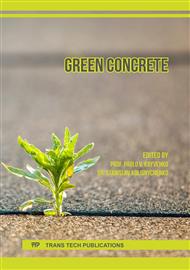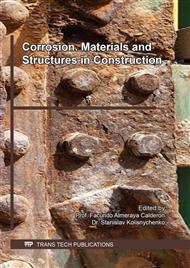p.222
p.228
p.233
p.239
p.246
p.253
p.262
p.267
p.272
Carbonation Resistance of Sustainable Concrete Using Recycled Aggregate and Supplementary Cementitious Materials
Abstract:
Green concrete is a recent sustainable practice in UAE that was enforced by Dubai Municipality in construction field within the emirate of Dubai to reduce the carbon foot print in construction industry and to increase the durability of the structures. This led the construction industry to reduce the usage of ordinary portland cement by replacing it with supplementary cementitious materials (SCMs) such as Grand Granulated Blast Furnace Slag (GGBS) and flyash (FA). Incorporating GGBS or FA in concrete mixtures can improve durability parameters of hardened concrete, such as resistance to water permeability, reduced water absorption and chloride penetration. This ultimately increases the structure’s service life by increasing the threshold of concrete mixture for chloride induced corrosion. On the other hand, carbonation induced corrosion to concrete is usually being ignored or forgotten generally, due its usual slow rate ingression in plain portland cement concrete mixtures. Several studies showed that incorporating some types of SCM – especially at high percentage - can reduce the concrete resistance to carbonation. Additionally and for concrete with recycled aggregate, carbonation investigation should be taken into consideration. This is since recycled aggregates are reused aggregates that are extracted from demolished structures and buildings which were already subjected to different environmental exposures and deteriorations. Unlike chloride penetration, there is no direct ASTM standard test to anticipate the concrete mixture resistance to carbonation at early ages. In this study, concrete mixtures with flyash and different recycled aggregate replacement percentages are investigated for carbonation resistance in accelerated proposed method, considering concrete mixtures’ key parameters like water-cement ratio, and total cement content. The results are analyzed to arrive to pertinent conclusions for the best utilization of sustainable concrete for carbonation resistance.
Info:
Periodical:
Pages:
246-252
Citation:
Online since:
May 2019
Authors:
Price:
Сopyright:
© 2019 Trans Tech Publications Ltd. All Rights Reserved
Share:
Citation:




